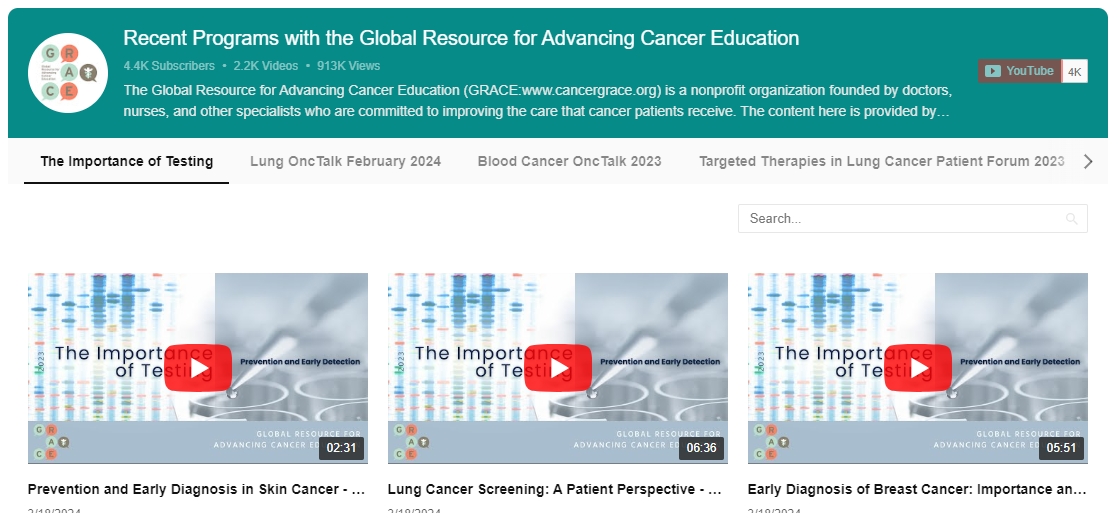Article and Video CATEGORIES

Probably the most immediate potentially practice-changing presentation from ASCO was the Japanese J-ALEX study in the subset of about 4-5% of patients with non-small cell lung cancer (NSCLC) who have the molecular driver known as an anaplastic lymphoma kinase (ALK) rearrangement, which we now routinely test for from the tumor tissue of patients with a non-squamous metastatic NSCLC. The current historical standard of care as first line treatment is Xalkori (crizotinib), which is an ALK inhibitor that happened to be readily available when the ALK rearrangement was first being studied in NSCLC about 5-7 years ago. Though it was granted an accelerated FDA approval back in 2011 based on early very promising activity and has since been confirmed to be superior to chemotherapy as first line treatment in ALK-positive patients, it is a less active ALK inhibitor than many other "second-generation" ALK inhibitors such as Zykadia (ceritinib) and Alecensa (alectinib), both now FDA-approved for patients who have developed progression after Xalkori or who are not able to tolerate it, as well as other agents still in development, including brigatinib (likely to become approved soon), and a few others further behind in development but also very active against ALK-positive NSCLC.
A question that logically follows is whether it is better to give one of these more active second generation ALK inhibitors as first line therapy, where they are likely to be more active for longer than if given for "acquired resistance" after Xalkori, or whether it's better to start with Xalkori and have other powerful ALK inhibitors left for later. Should we use our best drug up front or only the most effective drug required to do the job for now, saving something in the tank as we think more about advanced lung cancer as a distance race than a sprint? How much do we prioritize control now vs. options later?
There are several trials that have been initiated that all test a second generation ALK inhibitor vs. Xalkori. Two of the first to be completed compare Alecensa to Xalkori, a large, global trial known as ALEX, and a smaller trial done in Japan only, known as J-ALEX, which reported early and remarkably interesting results at ASCO 2016.
The study enrolled just over 200 ALK-positive but ALK inhibitor naive patients randomized to either A;ecena, at a dose used in Japan (300 mg twice daily) that is half of the current standard outside of Asia, or the current standard of Xalkori at the standard dose of 250 mg twice daily. Progression-free survival (PFS) by independent review was the primary endpoint. It was both statistically and clinically significantly positive, with a remarkably longer median PFS actually not yet reached but exceeding 20 months at the lower limit for Alecensa vs. 10.2 months for Xalkori. The hazard ratio was 0.34, meaning that there was a 66% improvement in PFS with Alecensa.
Notably, the authors looked at various subsets of patients and found that essentially all groups of patients, regardless of age, sex, method of testing for ALK, or any other factor did much better with Alecensa. But there was a remarkable difference in time to progression for patients who had brain metastases when they started the study. In such patients, the PFS was 92% better for Alecensa vs. Xalkori. This fits with the available evidence that the second generation ALK inhibitors penetrate into the central nervous system (brain, basically) much better than Xalkori and have demonstrated good responses in patients with brain metastases. Importantly, patients with an ALK rearrangement have a pattern of their disease spread that is different from other lung cancers and has a greater tendency to spread to the lining of the heart, the ovaries in woman, and the brain in many patients, so having a treatment for ALK-positive NSCLC that has very good activity in the brain may be especially valuable if it inhibits development of progression in the brain for a very long period of time. This is especially true because brain metastases can cause so many problems, ranging from headaches and vision changes to seizures and various neurologic problems.
Response rates, as measured by independent review, also favored Alecensa, 85.4% vs. 70.2% in the broad study population – and 91.6% vs. 78.9% in the subset with measurable lesions. As shown in the waterfall plots on the right below (where bars going down reflect the amount of tumor shrinkage), overall deeper responses were seen with Alecensa.
Importantly as well, Alecensa had a far superior side effect profile, with Xalkori associated with far higher levels of multiple non-hematologic side effects both overall and grade 3 or higher. In the figure below, called a "tornado plot", the length of the bar in either direction shows the percentage of patients reporting any degree of the side effect, and the darker portion closer to the middle shows the percentage of patients reporting moderate to severe levels of that side effect. And as noted at the bottom of the figure, this difference in side effects was associated with a rate that was twice as high for Xalkori as for Alecensa. Though as I noted above, the trial was designed with a lower dose of Alecensa in this Japanese patient population than is currently the standard in the US and most other parts of the world.
The trial doesn't report on survival, as most of the patients are still alive and we hope will remain so for a long time. So what do these results really mean. Should Alecensa become first line therapy everywhere based on a higher PFS and response rate, paired with a better side effect profile, in a Japanese-only population?
I’ll confess I was skeptical about how important a trial positive for a PFS benefit in first line would be if isn’t better than the PFS of Xalkori followed by a second generation ALK inhibitor later. But here we see a PFS for initial Alecensa of more than 20 months, likely to be more than we could expect to get with first line Xalkori, with a median of 10-11 months, followed by Alecensa or any other ALK inhibitor in the second line setting, with a median typically in the range of 7-8 months. This strategy may well lead to an improvement in overall survival, which we have yet to see, but even if all we get is an equivalent survival, which these results indicate is a conservative expectation, there are a couple of major reasons to favor Alecensa. First, the side effect profile is very clearly superior for Alecensa, improving the therapeutic index and patient experience even if it only proves to be a lateral move in terms of overall survival. That said, it's possible that this difference is more pronounced in a Japanese population and with this particular dose for Alecensa, since there may well be racial differences in how different cancer drugs are metabolized. Another key factor is that Alecensa and other second generation ALK inhibitors have superior efficacy against brain metastases, which as I mentioned is a particularly relevant and challenging aspect of disease to manage in ALK-positive NSCLC.
The fact that this is in Japan only and doesn't test Alecensa at the better studied and current FDA approved dose is a limitation, and the study enrolled only a little over 200 patients. Both of these caveats are addressed by the much larger global ALEX trial, which has completed enrollment and will have results presented in 2017 to address these issues. If it corroborates the key findings presented here, I would say that Alecensa should be considered the clear standard of care for initial ALK inhibitor therapy. But what should we do in the meantime?
I think it's helpful to note that the PFS benefit here is tremendous, so even if the global ALEX trial shows a PFS difference of "only" 6-8 months rather than 10 or more, it would be not just statistically but clinically significant. And as we struggle with how conservative to be about the size of trials and whether we should use Japanese studies to change management outside of Japan, I think it's helpful to remember that the global standard for EGFR mutation-positive disease changed to EGFR inhibitor therapy based on even smaller Japanese-only trials, and we have never hesitated that this was a poor decision. I hate to see the world interpreting the same strength of evidence differently depending on the situation, so I am currently inclined to favor Alecensa as first line if it will be covered.
We will be getting information not only from the larger, global ALEX trial in 2017, but also the results of of similar trials with other ALK inhibitors soon, so this field will continue to evolve. Overall, though, this leads to better options for patients and in my mind helps clarify how a PFS benefit can be very valuable, particularly when the new treatment doesn't add significant cost and improves tolerability, even if it doesn't change overall survival.
Thoughts?
-
fanos says:
Does this information also apply to the ROS-1 positive NSCLC Stage IV?
-

Dr West says:
No. ROS1 is a distinct molecular marker, and crizotinib tends to work especially well for it, while several of the second generation ALK inhibitors do not, so we cannot generalize results from ALK-positive patients to those with a ROS1 rearrangement.
-Dr. West
-
fanos says:
Thank you for your prompt reply. If Alectinib is not recommended for 1st or 2nd line treatment–what are the possibilities for 2nd line treatment of the ROS1 rearrangement when the crizotinib fails?
-

Dr West says:
Chemotherapy is the current leading recommendation. Many people have observed that patients with a ROS1 rearrangement often respond very well to a regimen that includes pemetrexed.
-Dr. West
-
fanos says:
Has Selumetinib for NSCLC (ROS1 rearrangement positive) shown any promise?? How does that drug compare with pemetrexed? Are there any clinical trials or results available?
-

Dr West says:
We have no information to speak to that question.
Please feel free to offer comments and raise questions in our
discussion forums.
Forum Discussions
Hi Blaze,
As much as I hate to say it, Welcome back Blaze. It sounds like you're otherwise feeling good and enjoying life which is a wonderful place to be. ...
Waiting for my appointment with oncologist this morning. Thank you for the response. It helps. <3
It sounds like you’re thinking of this in a very appropriate way. Specifically, it sounds like the growth of the nodule is rather modest, though keep in mind that the change...
Hi and welcome to GRACE. I'm sorry your mom is having this difficulty. An indwelling catheter is used when the pleura space continually fills and the catheter is always there to...




